Updates & Blog
Unprecedented heat, drought pushing southern fire danger to extremes
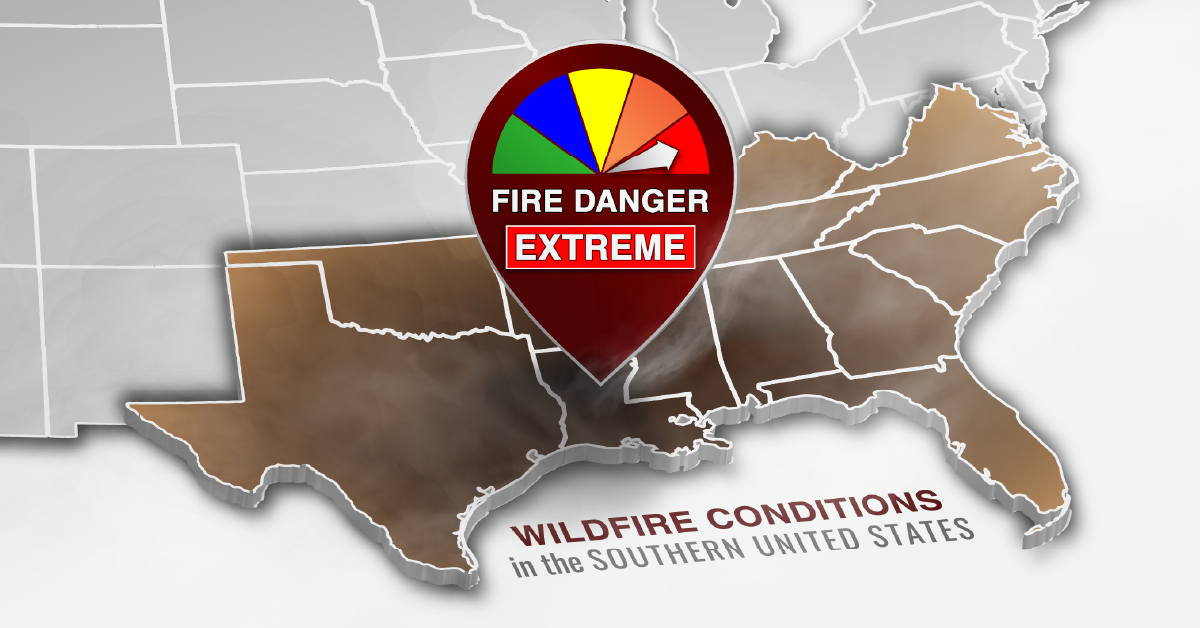
The Southern United States faced a challenging summer with unrelenting daily temperatures of more than 100 degrees, abnormally low relative humidity, critically dry vegetative fuels ready to burn, wildfires exhibiting extreme fire behavior, and to top it off — a hurricane.
Hot summers and wildfires are not new to the South. Nor is interagency cooperation in responding to and suppressing wildfires. But this summer has been far from normal, and in the case of Louisiana wildfires this August — unprecedented.
“For more than 40 days, we’ve experienced temperatures over 100 degrees with low relative humidity, sometimes dipping into the teens,” said Wade Dubea, Louisiana State Forester. “For Louisiana, which typically has a wetter, humid climate, this is record-breaking.”
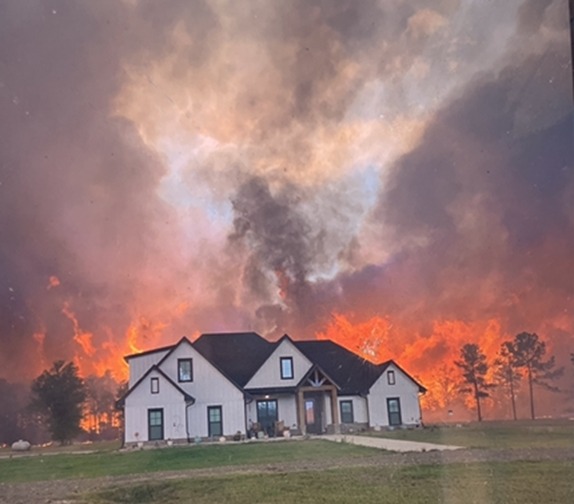
Lisa Lewis, Forest Supervisor of the USDA Forest Service Kisatchie National Forest grew up in Louisiana and said she has never experienced weather “so hot, so dry, for so long.” With such prolonged weather conditions, she recognizes no one agency can sustain such a wildfire response tempo and is appreciative of the cooperation among the USDA Forest Service, Louisiana Department of Agriculture and Forestry and partners, having provided large air tankers, other aircraft and hundreds of support personnel.
According to the National Incident Management Situation Report (IMSR) — a synopsis of wildland fire and all-hazard activity across the country — the Southern Area remains the number one priority geographic area for wildfires nationally. Underscoring an already noteworthy North American summer fire season, this year is the first time on record that the Southern Area has been the top national priority area for wildfire response during this time of year when historically the West has experienced the most critical fire activity.
In fact, the only other time the Southern Area was the top priority region on the IMSR during the month of August was in 2005 for Hurricane Katrina.
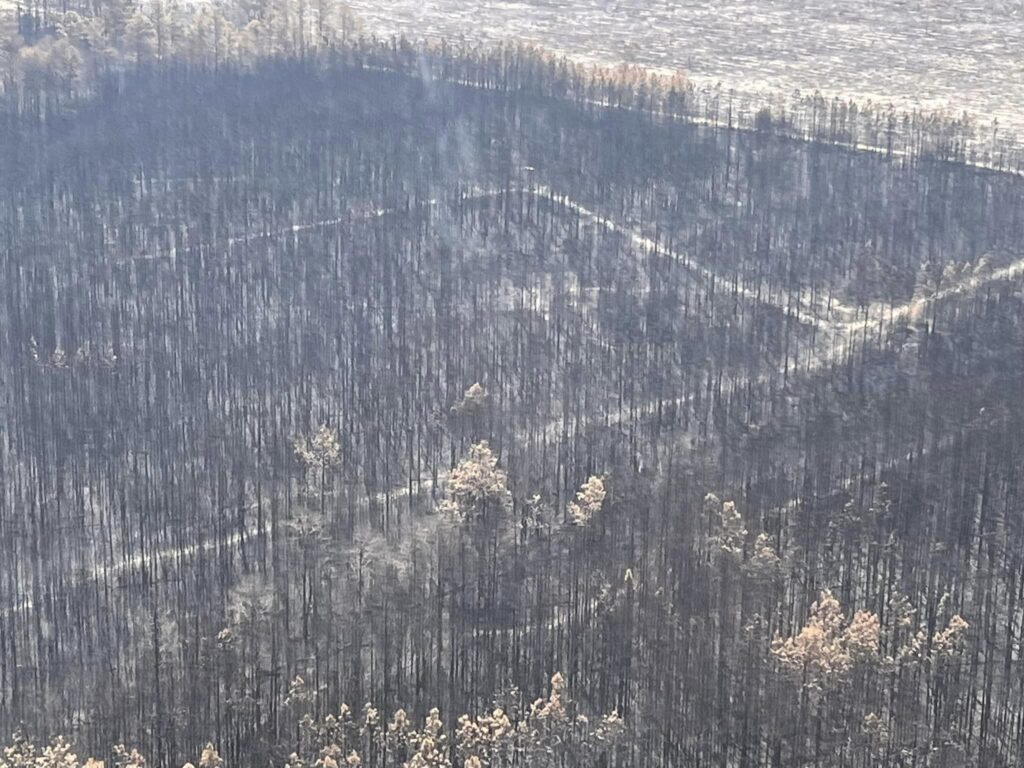
This summer, the areas where many of the wildfires are occurring in Louisiana are the same areas where Hurricanes Delta and Laura left behind an abundance of downed trees and debris in 2020. This has created a tinderbox for fire conditions as the severity of the fire environment is influenced by the amount of available vegetative fuels, and how susceptible those fuels are to burn. This concern extends across the Southeast, where devastating hurricanes have left behind, and continue to create, conditions conducive to wildfire.
“The fire environment is extreme. We only saw similar conditions back in 2000, but this year, we’re having wildfires grow to over 10,000 acres, that run quickly and produce major crown fires in the tops of pines,” said Dubea. “That is totally unusual for us.”
The impacts that these high-intensity wildfires are having on the landscape is also extreme.
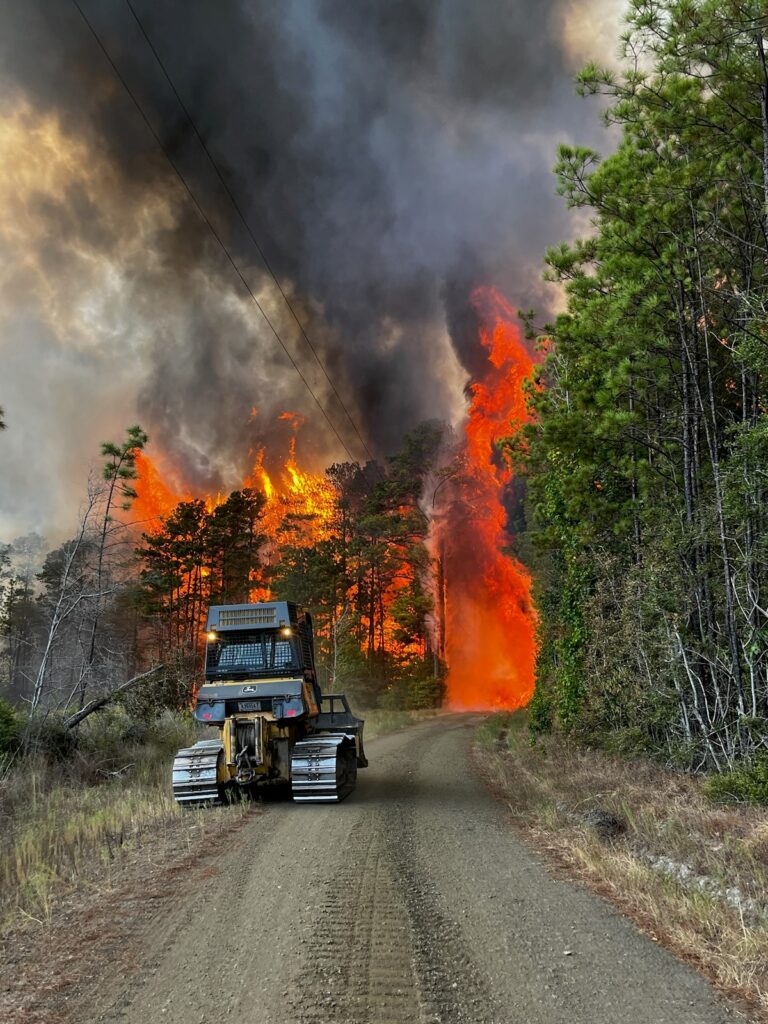
“Here in Texas, going out after a fire and seeing the devastation, it literally looks like a nuke was dropped,” said Mandy Chumley, USDA Forest Service National Forests and Grasslands in Texas Public Affairs Specialist. “The level of intensity of the fires and the effects on the landscape are what is unprecedented for me.”
With the support of key interagency cooperative partnerships, state forestry agencies are responsible for protecting 94% of the South’s total land area from wildfires. Since Jan. 1, 2023, approximately 15,700 wildfires have burned more than half a million acres across the southern states. For perspective, nearly 40 percent of all wildfires in the United States this year have occurred in the Southern Region.
The response to these wildfires has also been monumental. On Aug. 24, Al Davis, Texas A&M Forest Service Director and Chair of the South Central Forest Fire Compact activated an interagency agreement that allows for enhanced personnel and equipment resource movement among states.
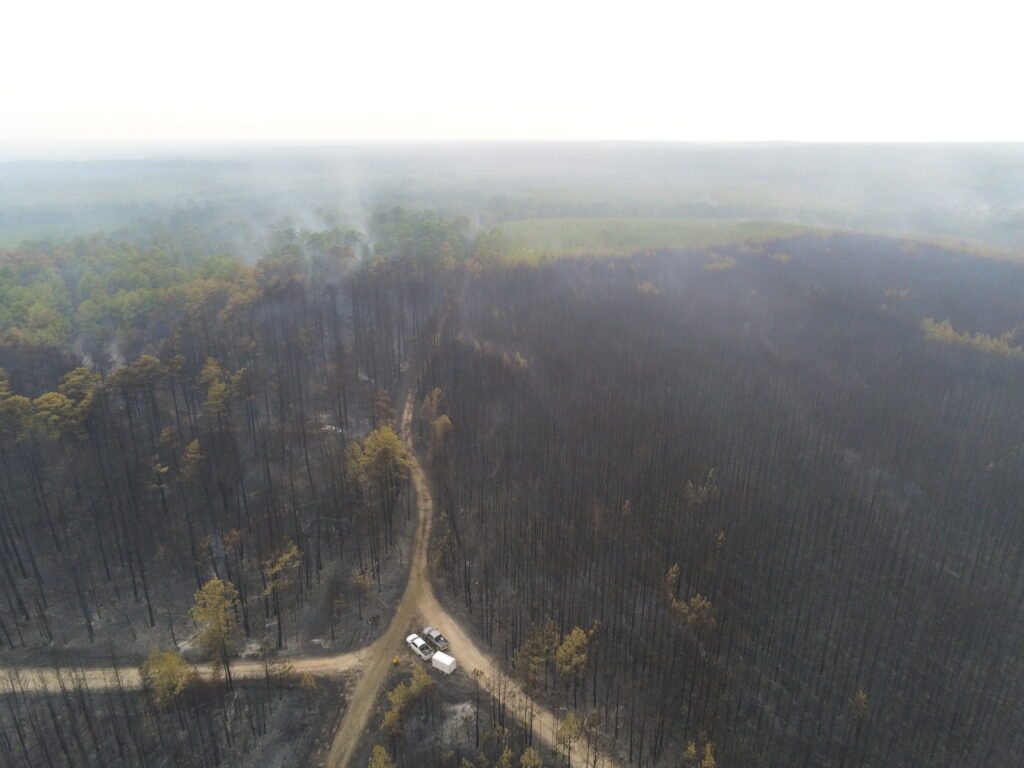
“We are supporting the Texas A&M Forest Service and local fire resources to improve conditions in Texas,” said Shardul Raval, Fire and Aviation Management director for the Forest Service’s Southern Region. “The interagency response has been robust.”
To support wildland firefighting operations in the region, an additional 1,643 personnel, 6 crews, 574 pieces of equipment and 105 aircraft are staged in high-priority areas.
“The current drought in Texas and Louisiana is unprecedented. Thankfully, fires on the National Forest and Grasslands in Texas have remained relatively small as a result of our prescribed fire program,” said USDA Forest Service National Forests and Grasslands in Texas Forest Supervisor Kimpton Cooper. “This has allowed the NFGT to support our state and federal partners with ground resources, heavy equipment and aircraft to protect the communities we serve. The collaborative effort between states, communities and federal agencies working together across boundaries is extraordinary. The NFGT is proud to work with outstanding partners and great organizations in these historic times.”
When asked if his state has all the firefighting resources it needs, Dubea said, “We are grateful for the support Louisiana has received from so many corners of this country. The one thing we really need right now is some rain.”
Regional fire weather forecasters say there is a seasonal weather change forecast to potentially occur in early October. This change could cool temperatures down and possibly produce some much- needed rainfall.
For more information on wildfire activity visit the NIFC National Incident Map or the Southern Area Coordination Center website.
###
Contacts:
Southern Group of State Foresters:
SGSF Communications Director, 850-843-1170, Chelsea.Ealum@SouthernForests.org.
Texas A&M Forest Service Contacts:
Texas A&M Forest Service Information Officer, 979-255-0591, information@tfs.tamu.edu
Texas A&M Forest Service Communications Office, 979-450-6606, newsmedia@tfs.tamu.edu
National Forests and Grasslands in Texas:
Mandy Chumley, Public Affairs Specialist, 936-639-8599, mandy.chumley@usda.gov
USDA Forest Service, Kisatchie National Forest
Jim Caldwell, Public Affairs Officer, 337-353-4668, James.caldwell@usda.gov
Links:
https://www.ldaf.state.la.us/forestry/
https://gacc.nifc.gov/sacc/outlooks.php
This press release is republished with permission from the Texas A&M Forest Service. Regional data and information added.